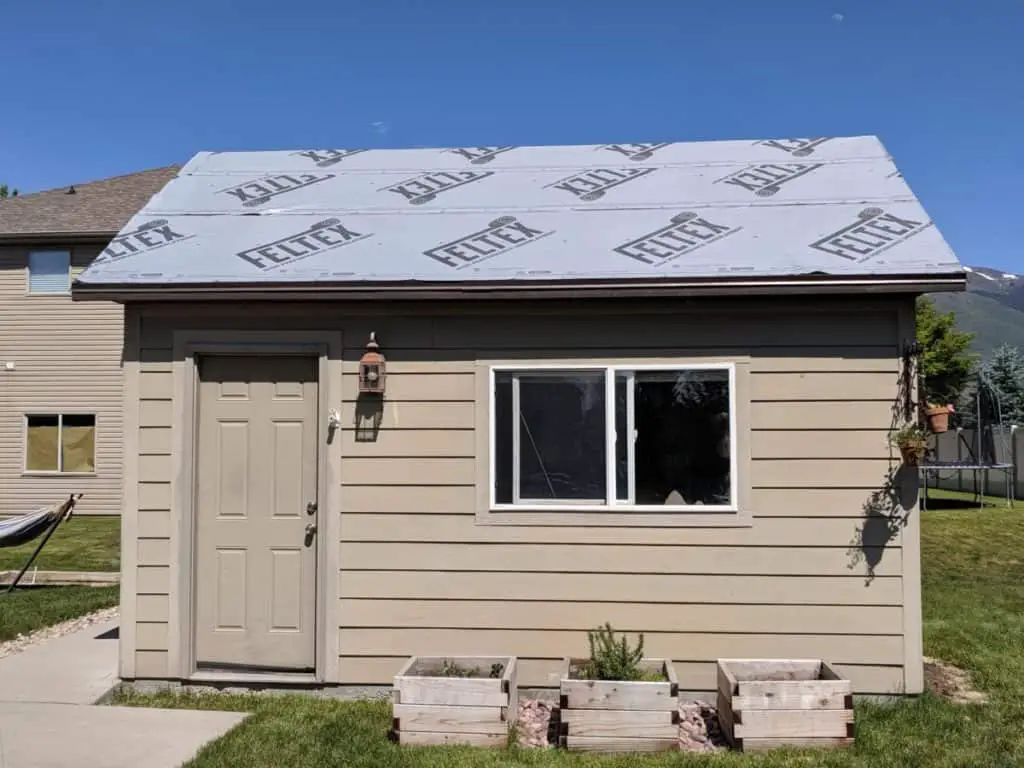
Roofing a shed is a common DIY roofing project because sheds are usually a lot smaller than a house. Due to this fact, many people may wonder if roofing felt is necessary for a shed.
Is roofing felt necessary for a shed? Roofing felt is necessary to protect against any water that can get past the shingles, without felt you risk water damage to the wood decking which will decrease the lifespan of the roof. Additionally, most manufacturers will void any warranties to a roof that hasn’t been properly installed with felt.
There are several other benefits to using felt underlayment which most people don’t consider when working on something smaller like a shed.
Worried About Doing the Work Yourself?
I recommend finding a professional roofing contractor through our trusted partner Home Advisor because they allow you to get up to 4 quotes for free. This allows you to compare and choose the best roofing professional for your needs. Check them out by clicking this link.
What Are the Benefits of Roofing Felt?
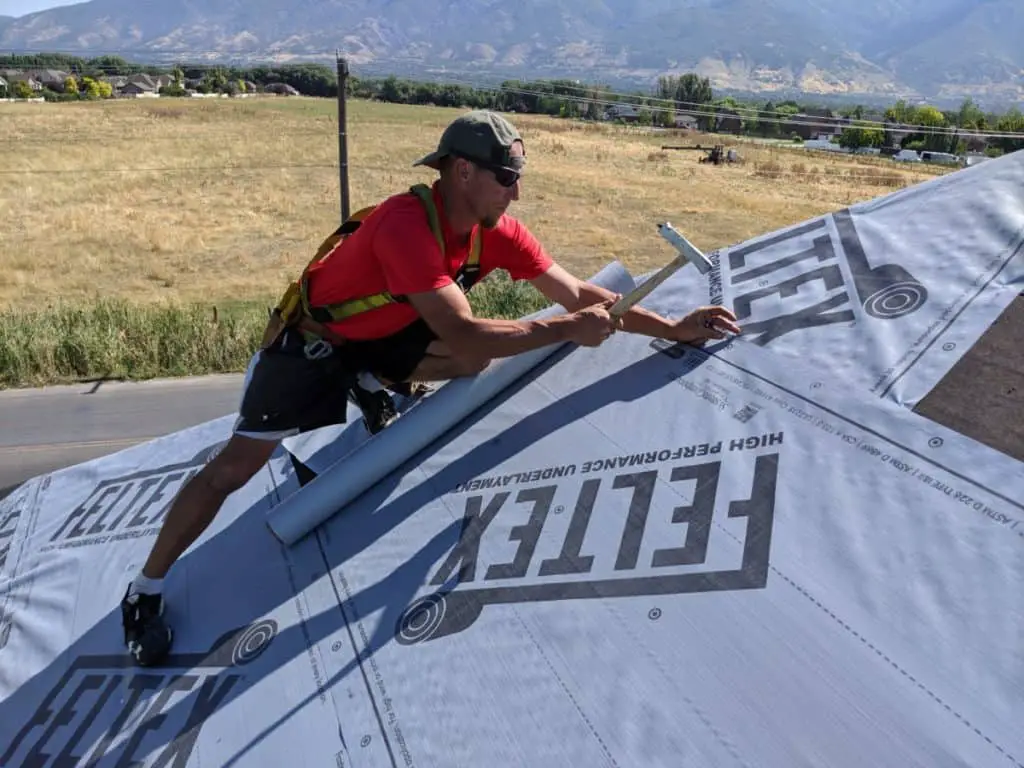
These benefits underline the main purposes of using felt underlayment, not all of them are critical when it comes to smaller projects like a dog house. But most of the time when you are installing shingles, it’s important to have felt underlayment.
Benefits:
- Prevents wind-driven rain from reaching the interior of the roof.
- Helps shingles to maintain a UL Class A fire rating.
- Fulfills requirements by most building codes.
- Prevents sap in some types of wood decking from reacting to the asphalt shingles.
- Helps to protect against any water or vapor that may get past the shingles and damage the wood decking.
- Provides extra traction for walking on the roof when shingling
- Protects wood decking in an event of shingles blowing off.
Costs:
- The costs of the felt, in general, can range anywhere from $0.02 – $0.13 per square foot depending on the type. It is usually sold in rolls of about 200 square feet.
- Time, the time it takes to install which varies depending on the size of the roof and skill level. In general, this doesn’t take long.
As you can see, there are many benefits to using roofing underlayment. Not all of these benefits may be necessary for a shed, but the water protection and vapor barrier alone makes it well worth the time and money.
There are two main types of felt underlayment that you can choose from Synthetic Underlayment or Tar Paper. There are big differences between the two. Tar Paper is becoming less popular by contractors because Synthetic felt has many more advantages.
Click Here To Check Out My Roofing Gear Guide and See What Tools You’ll Need!
Differences Between Synthetic Underlayment and Tar Paper
Synthetic Underlayment, or Felt, is typically made from polypropylene or polyester materials. While Tar Paper is made of cellulose or fiberglass that is coated with asphalt.
Synthetic Felt usually comes in a light gray color. This is important because it makes the roof up to 30 degrees cooler than the black tar paper. This doesn’t matter as much once the shingles are on, but you will definitely feel the difference in temperature when you are shingling your shed on a warm summer’s day.
A big difference between the two is that Synthetic Felt is stronger, lighter weight, and more durable than Tar Paper.
Click Here to See my Article on Why Hand Nailing is Better!
Synthetic Felt was designed to protect the roof decking for longer periods of time. If there is a delay before installing shingles the Felt can withstand, the sun’s UV radiation for up to 6 months. Comparatively, Tar Paper will begin to wrinkle and deteriorate until brittle if exposed to the sunlight for longer than a couple of days.
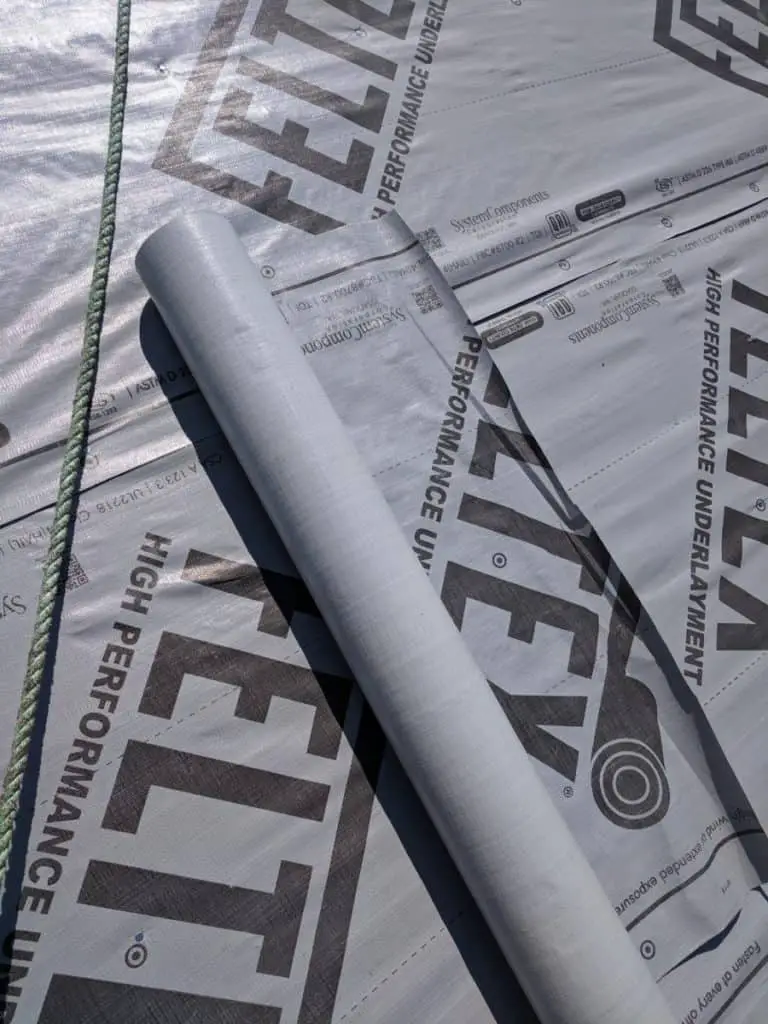
In addition to the strength and durability of Synthetic Felt, it’s easier to install and less prone to wrinkles. It also prevents fungal growth and does not absorb any water. Unlike the Synthetic Underlayment, Tar Paper absorbs water and could support fungal growth.
Another difference between the two types of felt is traction.
Synthetic Felt has more traction than Tar Paper, even when wet. Tar Paper has an oily surface that makes it more slippery. Tar Paper is also more prone to tearing than Synthetic Felt. There is nothing worse than slipping on a roof because the Tar Paper broke beneath your feet.
The last difference I want to point out is the cost difference between the two. This is where Tar Paper has the upper hand.
The cost range for Synthetic felt runs anywhere from $0.06 – $0.13 per square foot.
While Tar Paper ranges about $0.02 – $0.10 per square foot.
Felt is usually sold in rolls of about 1000 square feet. To put it in better perspective, on the cheaper side of the spectrum, Synthetic felt can cost about $66 per roll. While the Tar Paper would only cost about $22 per roll.
So which do I recommend you get? If you are on a budget and just want a basic underlayment to get the job done, then tar paper will do just fine.
But if the price difference fits within your budget, then Synthetic Underlayment is definitely the best choice.
However, if you decided on using the basic tar paper, there are two types of Tar Paper that you must consider. The 15 lb and the 30 lb Tar Paper are the two main options. Both cost about the same but there are some differences.
What’s the Difference Between the #15 and #30 felt paper?
The #15 paper is thinner and lighter than the #30 paper. This means that the 15 lb is less durable and tears more easily.
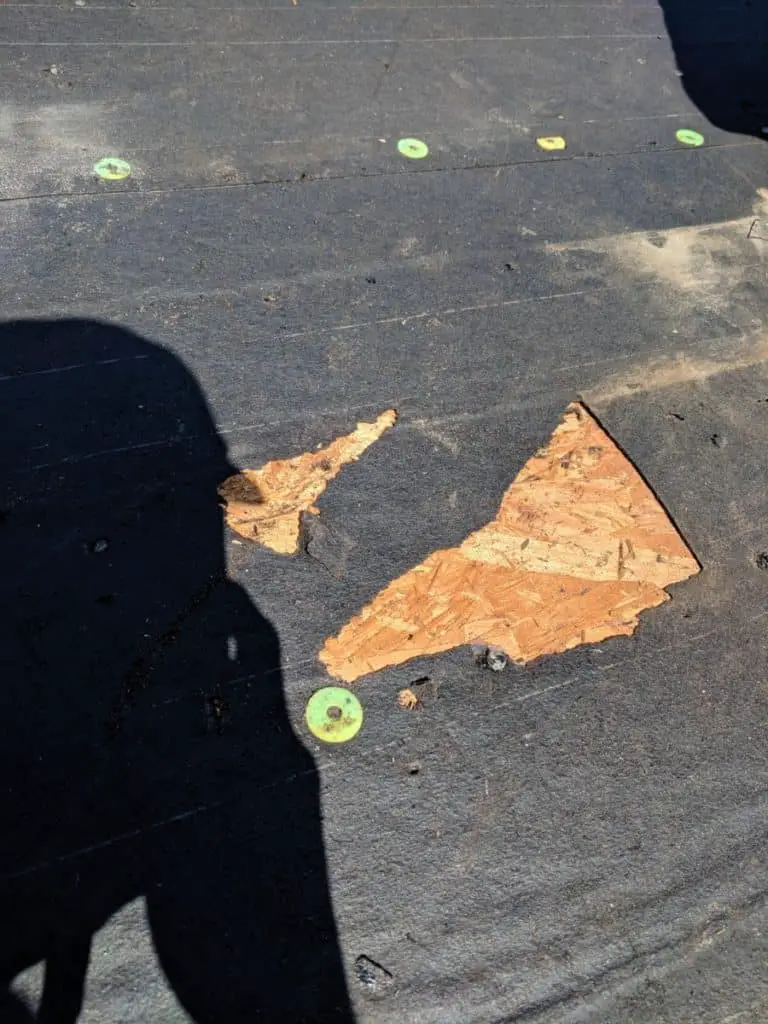
The 15 lb paper is the minimal required weight for code.
Some say that the 15 lb is better for steeper roofs because water runs off the roof faster and won’t stay on the thinner felt.
Others argue that the 30 lb paper is better for steeper roofs because it is easier to walk on and won’t tear as easily as the 15 lb paper.
I would recommend always going with the 30 lb paper because it’s more durable and there isn’t much of a price difference between the two.
How Do I Properly Install Felt on My Shed?
The key to installing felt comes down to two main things:
- Keep It Straight: Make sure you keep the felt straight because it will be easier for you when it comes to installing the shingles. The felt usually comes with guided lines and nail markings. Follow these guided lines by aligning the bottom edge of the felt you are laying with the top guided line of the felt you already installed so it’s about a 3-inch overlap.
- Start at the Bottom & Work Up: When you start the first strip of felt, align the bottom of the felt to be flush with the bottom edge of the roof. If you need to have Ice and Water Shield, then the Ice and Water Shield will be the first strip that is flush with the edge of the roof, and the felt will overlap the top of the Ice and Water Shield by 3-inches.
What is Ice and Water Shield and Will I Need it?
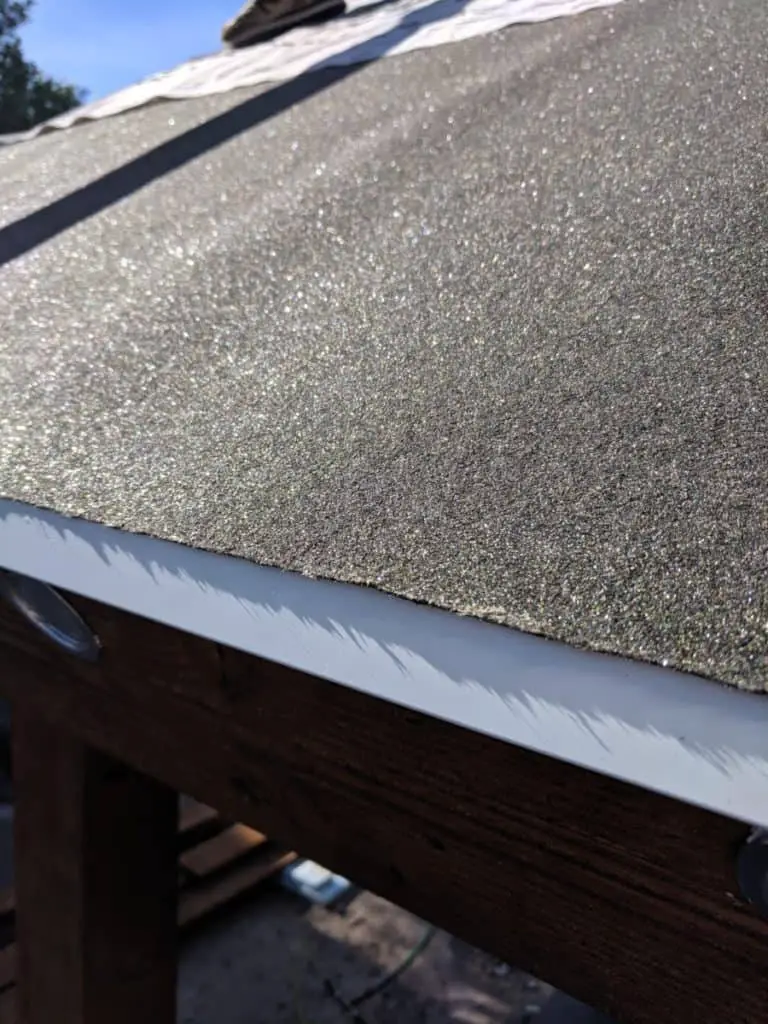
Ice and Water Shield is an underlayment material made out of polymer-modified bitumen.
It has a sticky backside that seals down to the wood decking which provides extra water protection against ice dams and strong areas of water flow.
Ice dams are a build-up of ice that is formed on eaves, or the bottom edges of a roof. This usually occurs when the average temperature is 25°F (3.8°C) or lower. As ice melts and the water freezes in a continual cycle, the water will creep up the roof and underneath the shingles. This is why it’s important to have Ice and Water Shield because it gives better protection barrier against ice.
Most codes that apply to areas that have colder climates typically require that Ice and Water Shield be installed on the eaves of a roof and in critical areas like valleys.
Depending on where you live and what the weather is like, will determine if you need Ice and Water Shield. For example, warmer areas that don’t experience the winter season will not need Ice and Water Shield. While areas that experience heavy winters may need several rows of Ice and Water Shield.
Check your local codes to find out what the standards are for Ice and Water Shield especially if you live in a colder climate.
Related Questions
Roofing Felt Alternatives? There isn’t an alternative to the roofing felt. If you are working on a project that has a small roof and you don’t want to buy a whole roll of roofing felt. The best option would be to contact a local roofing company and ask them for scraps or to buy the amount you need.
Can it Rain on Roofing Felt? Roofing felt is designed to protect the wood decking against water. The Synthetic Felt is more water resistant than the Tar Paper and was designed to protect the wood decking for longer periods before shingles are installed. The Synthetic Felt can protect the roof up to 6 months, while Tar Paper is much less.
